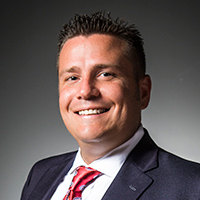Maximize Your Savings Opportunities With the Often-Overlooked HSA
These health savings tools can offer a triple tax advantage for some.


Here’s something nearly every financial professional who’s a retirement specialist wants you to know:
If you want to maximize the money in your portfolio, you can’t limit your focus to finding successful investments.
Of course you want to keep growing your money to and through your retirement years. But it’s also important to manage the risk factors that can eat away at your bottom line, from inflation and health care costs to taxes.
From just $107.88 $24.99 for Kiplinger Personal Finance
Become a smarter, better informed investor. Subscribe from just $107.88 $24.99, plus get up to 4 Special Issues

Sign up for Kiplinger’s Free Newsletters
Profit and prosper with the best of expert advice on investing, taxes, retirement, personal finance and more - straight to your e-mail.
Profit and prosper with the best of expert advice - straight to your e-mail.
The good news is there are many strategies that can help you deal with those risks, including ways to keep the IRS from taking more than its fair share of your nest egg. But with so many different rules governing whether contributions and earnings are taxable, tax-deferred or tax-free, it can be tough to compare and decide which investments will best serve your needs over the course of your lifetime.
Perhaps that’s why tax-favored health savings accounts (HSAs), which have been around since 2003, still don’t get much attention as an investment tool. Or maybe it’s because to open an HSA, you have to have a high-deductible health insurance plan. (To qualify in 2019, you must have a policy with a deductible of at least $1,350 for single coverage or $2,700 for family coverage.) There also has always been a bit of confusion regarding HSAs and flexible spending accounts (FSAs), which have many of the same benefits but also some “use it or lose it” time limitations.
Whatever the reason, it’s a shame HSAs are so often overlooked. Because unlike most investments, which might offer two tax benefits (such as tax-free contributions and tax deferral on growth, or tax-free growth and tax-free withdrawals), an HSA can be a triple threat. Here’s how:
- All of your contributions to an HSA are pre-tax, just like with a 401(k), and the contributions remain in your account until you use them. You can contribute to an employer-sponsored HSA plan through payroll deductions or, if you’re doing the HSA on your own, take the deduction when you file your income tax. Just as with a 401(k), there are limits to how much you can contribute each year. The maximum contribution for 2019 is $3,500 if you have single coverage, or up to $7,000 for a family. If you’re 55 or older, you can contribute an additional $1,000.
- Any growth in your HSA is tax-free, and you can choose how to invest the money in your account. You can play it safe and direct your funds to a relatively risk-free checking or money market account, but you also may be able to go with investments such as dividend-paying bonds, ETFs or mutual funds. These offer the potential for a higher rate of return, but you assume more risk and could lose some of your principal and interest.
- Withdrawals for qualified medical expenses are tax-free at any time. Here’s where the HSA offers unique benefits. If you take money from your account to pay for a medical expense (there’s a list of qualifying expenses at https://www.irs.gov/publications/p502), you don’t have to pay taxes on the withdrawal, no matter what age you are. Once you turn 65, if you have money in the account you haven’t used, you can withdraw it for any reason and pay ordinary taxes on it without a penalty. Or you can continue to use it tax-free to pay for medical costs. (You can’t contribute to an HSA once you’re enrolled in Medicare, but you can draw on funds already in the account.)
Is an HSA the right fit for you? If you’re a high earner and can’t contribute to a Roth IRA, an HSA is an appealing alternative for maximizing investment savings. But even if you have the Roth option, an HSA is another tax-efficient tool to consider — one that also can help you save for future health care costs.
How significant are those expenses in retirement? When Fidelity Investments did its 16th annual retiree health care cost estimate, it found that a 65-year-old couple retiring in 2018 would need $280,000 to cover health care and medical expenses throughout retirement. That was a 2% increase from 2017 and a 75% increase from Fidelity’s first estimate of $160,000 in 2002. And that doesn’t include the cost of long-term care.
As for taxes, no one knows what the tax system in America is going to look like down the road. But given our ever-growing national debt — which is currently over $22 trillion — many experts agree taxes in our country are likely to be higher in the future.
The average citizen can’t do much to control the outside factors that contribute to retirement risk. But you can take steps now to prepare for what’s ahead.
Talk to your financial adviser or tax attorney about what an HSA could mean for you. You also can find information at www.irs.gov/pub/irs-pdf/p969.pdf. Research the different options available, and make sure you’re getting what you need to maximize your hard-earned savings.
Kim Franke-Folstad contributed to this article.
The article and opinions in this publication are for general information only and are not intended to provide specific advice or recommendations for any individual. We suggest that you consult your accountant, tax, or legal adviser with regard to your individual situation.
Securities offered through Kalos Capital Inc. and Investment Advisory Services offered through Kalos Management Inc., both at 11525 Park Woods Circle, Alpharetta, GA 30005, (678) 356-1100. Retirement Income Strategies is not an affiliate or subsidiary of Kalos Capital Inc. or Kalos Management Inc.
The appearances in Kiplinger were obtained through a PR program. The columnist received assistance from a public relations firm in preparing this piece for submission to Kiplinger.com. Kiplinger was not compensated in any way.
Profit and prosper with the best of Kiplinger's advice on investing, taxes, retirement, personal finance and much more. Delivered daily. Enter your email in the box and click Sign Me Up.

Kristian L. Finfrock is the founder of and a financial adviser at Retirement Income Strategies. He is an Investment Adviser Representative of Kalos Capital and a licensed insurance professional. He resides in Evansville, Wisconsin, with his two daughters.
-
 AI Appliances Aren’t Exciting Buyers…Yet
AI Appliances Aren’t Exciting Buyers…YetThe Kiplinger Letter Artificial intelligence is being embedded into all sorts of appliances. Now sellers need to get customers to care about AI-powered laundry.
-
 Ask the Editor: IRAs, 401(k)s and RMDs
Ask the Editor: IRAs, 401(k)s and RMDsAsk the Editor In this week's Ask the Editor Q&A, Joy Taylor answers questions on IRAs, 401(k)s and required minimum distributions
-
 Got $100 to Gamble? These Penny Stocks Could Be Worth the Ride
Got $100 to Gamble? These Penny Stocks Could Be Worth the RideVolatile penny stocks are high-risk plays with potentially high rewards. If you have $100 you can afford to lose, these three names are worth a look.
-
 Quick Question: Are You Planning for a 20-Year Retirement or a 30-Year Retirement?
Quick Question: Are You Planning for a 20-Year Retirement or a 30-Year Retirement?You probably should be planning for a much longer retirement than you are. To avoid running out of retirement savings, you really need to make a plan.
-
 Don't Get Caught by the Medicare Tax Torpedo: A Retirement Expert's Tips to Steer Clear
Don't Get Caught by the Medicare Tax Torpedo: A Retirement Expert's Tips to Steer ClearBetter beware, because if you go even $1 over an important income threshold, your Medicare premiums could rise exponentially due to IRMAA surcharges.
-
 I'm an Insurance Pro: Going Without Life Insurance Is Like Driving Without a Seat Belt Because You Don't Plan to Crash
I'm an Insurance Pro: Going Without Life Insurance Is Like Driving Without a Seat Belt Because You Don't Plan to CrashLife insurance is that boring-but-crucial thing you really need to get now so that your family doesn't have to launch a GoFundMe when you're gone.
-
 I'm a Tax Attorney: These Are the Year-End Tax Moves You Can't Afford to Miss
I'm a Tax Attorney: These Are the Year-End Tax Moves You Can't Afford to MissDon't miss out on this prime time to maximize contributions to your retirement accounts, do Roth conversions and capture investment gains.
-
 I'm an Investment Adviser: This Is the Tax Diversification Strategy You Need for Your Retirement Income
I'm an Investment Adviser: This Is the Tax Diversification Strategy You Need for Your Retirement IncomeSpreading savings across three "tax buckets" — pretax, Roth and taxable — can help give retirees the flexibility to control when and how much taxes they pay.
-
 Could an Annuity Be Your Retirement Safety Net? 4 Key Considerations
Could an Annuity Be Your Retirement Safety Net? 4 Key ConsiderationsMore people are considering annuities to achieve tax-deferred growth and guaranteed income, but deciding if they are right for you depends on these key factors.
-
 I'm a Financial Pro: Older Taxpayers Really Won't Want to Miss Out on This Hefty (Temporary) Tax Break
I'm a Financial Pro: Older Taxpayers Really Won't Want to Miss Out on This Hefty (Temporary) Tax BreakIf you're age 65 or older, you can claim a "bonus" tax deduction of up to $6,000 through 2028 that can be stacked on top of other deductions.
-
 Meet the World's Unluckiest — Not to Mention Entitled — Porch Pirate
Meet the World's Unluckiest — Not to Mention Entitled — Porch PirateThis teen swiped a booby-trapped package that showered him with glitter, and then he hurt his wrist while fleeing. This is why no lawyer will represent him.